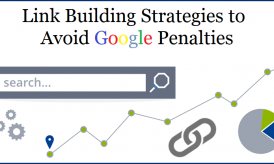When you create a small business anymore, it is crucial to have an online presence. However, simply existing online isn’t enough. When you are creating your website and all your online content, you need a way to drive traffic to that content.

The best way to do this is to implement techniques known as “search engine optimization” or SEO for short. By using SEO techniques, you are crafting your content with the intent of getting it to as close to the top of a search on a search engine – like Google or Bing – as possible when someone searches a term or phrase that is related to your business.
This can all be rather confusing if you aren’t sure how to do it. After all, to an amateur eye, search engine algorithms can be complicated. There are, though, some rather straightforward steps that you can take to give your small business’ SEO a boost. In this article, we will take a look at some of the tips you can use in your own small business.
Research Keywords
A big part of SEO is to use specific, targeted keywords in your content. These would be keywords that potential consumers would type into the search bar and, as a result, your website or your content would pop up.
Before you can use target keywords, though, you need to know what keywords that people will be typing in. You should be able to think of a few primary keywords yourself but don’t depend on this list alone. Once you have these keywords, type them into a search engine like Google. Then, you can scroll down to the bottom of the page see the related search terms. Using these, you can expand your list with other primary keywords and even long-tail keywords.
Not all keywords are worth your time, though. Luckily, with tools like Google’s Keyword Planner, you can easily see which keywords are worth your time. After all, while you want to use keywords, you want to be careful. Your content shouldn’t be just keywords; you need actual substance as the main mass of your content.
Be Careful of Your Titles and Descriptions
It is more than just the content inside of your articles, posts, and website that is important. You need to be precise in the crafting of every piece of content from the title to capture readers in all the way down to the way that you describe your content.
The title should, as you would expect, give a general overview of what someone is about to read or view. You can incorporate the keyword here but don’t make the title boring or confusing. You want potential traffic to know exactly what they are about to read and have a hook to draw them in.
However, the title isn’t all potential readers see when they see your result in a search engine. Below the title, a small paragraph called a meta-description shows up. If you pay close attention when you see these, you will notice that your search terms are put in bold text. Make sure to include your keyword in the meta-description so that readers will see that your content clearly states the answer to what they searched.
Use Infographics
Using an image like an infographic might seem counterintuitive when you are trying to use keywords to draw in readers but it can have a strong impact when you are trying to boost your web traffic.
Infographics have an advantage in the sense that they are eye-catching and catch the reader’s attention. They promise to answer the reader’s questions without forcing them to sift through a long article – it is all presented blatantly in front of them. This is especially advantageous if you are trying to share information that is typically considered boring or dull.
It is important to remember for infographics that you will still be targeting certain keywords and data points that will interest your readers. You should also be careful of the design you choose. A huge part of an infographic’s impact is that it is appealing to look at.
Sign Up For NAP Services
If your business has a physical location, it is crucial to sign up for NAP services. NAP stands for name, address and phone number. These services allow search engines to see your location. This means that, for example, if you are a mechanic in Manhattan, your business would show up if someone searched for a mechanic in Manhattan or searched for a mechanic using their location.
Some of the most common NAP services you should sign up for include Google My Business and Bing Places. It is absolutely crucial that when you sign up for these services you use the same information. Otherwise, you risk confusing potential customers about where you are and how they can contact you.
Optimize Images
We already went over the fact that you can optimize text heavy images like infographics but you can optimize simpler images such as logos as well. To do this, you need to add something called alt text.
Have you ever had a website load wrong and as a result instead of pictures coming up, you saw blank boxes with a description of the image instead? This is an instance of visible alt text. This text helps with the one thing that search engine algorithms can’t do yet; analyze an image. By using alt text, you are telling the search engine – in words it can read – what the image is. This way, it can show up in a search.
However, this doesn’t mean that you can put up any old image and expect traffic. The images still have to attract traffic. This means don’t use boring images or simple stock images. It also helps to keep file sizes below 70 KB so that it doesn’t hinder your website’s load time.
A final note is to make sure that your file has a relevant file name to your keywords. Believe it or not, this can help boost your content in an image search. So, don’t upload an image with generic or gibberish title; utilize your keywords.
This Article is contributed by David Smith, a blogger and world traveler, with experience manufacturing smart cards in China with Cardzgroup.















